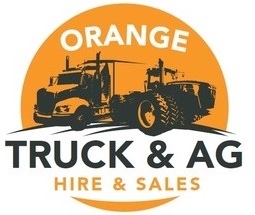
This article is bought to you by Orange Truck & Ag.
By Angus Brown | Source: Livestock Farm Monitor Project, Mecardo
We recently received a query from a premium subscriber asking the age-old question “Is it better to lamb/calve in autumn or spring?” While the question is not really market related, there is some data available we can look at for some broad brush analysis. This article looks at key measures for cattle enterprises.
When enterprise mix comes into question the usual answer is to do what is best for you, as that is what will be the most profitable. There are, however, some trends in benchmarking data which might make the flexible farmer think about their timing.
Ad - Used Machinery buying opportunities at Orange Truck & Ag. We also rent - Ad
Ad - Used Machinery buying opportunities at Orange Truck & Ag. We also rent - Ad
The query came from south west Victoria, and that is where we have some good data. So for this analysis, we’ve focused on that area but it’s applicable to high rainfall southern zones. Some of the factors identified might also impact profitability in other areas.
The Agriculture Victoria Livestock Farm Monitor Project (LFMP) reports a range of profitability indicators for participating beef enterprises in Victoria. We’ve picked out three to look at. Firstly, cost of production (COP), which is a great measure of farm efficiency.
Figure 1 shows the average cost of production for south west cattle enterprises, split into autumn and spring calving herds. Spring calving converts will tell you their cost of production is lower as they make better use of the spring flush of grass. Figure 1 shows that they might be right, but not always.
Ad - Used Machinery buying opportunities at Orange Truck & Ag. We also rent - Ad
Ad - Used Machinery buying opportunities at Orange Truck & Ag. We also rent - Ad
Of the eight years of data available, five have seen a lower cost of production for spring calvers. The average (COP) over the eight years is $1.61/kg lwt for autumn calvers and $1.41 for spring. 20¢ or 12.4% is a significant difference. Based on this small sample size, it looks like there have been more seasons that are better for spring calvers, and those seasons provide a cost of production advantage over autumn.
Figure 2 shows there is little difference in the price received between spring and autumn calvers. On average, autumn calvers have received 6¢ or 2.5% more. The most significant differences in prices are years when drought-induced price declines saw spring calves receive less than autumn calves.




We can see from figure 3 that the better price for autumn calvers doesn’t compensate for the higher cost of production. There has only been one year in the data where autumn calvers have had a better EBIT than spring calvers. The average EBIT for spring calvers is $118/ha, or 82% higher than the autumn calving average.


Key points
* Recently we were asked to look at the difference between spring and autumn calving herd profitability
* In south west Victoria spring calving herds have lower costs of production, but lower prices
* EBIT on a $/ha basis has been stronger for spring calving in each of the last six years
Ad - Used Machinery buying opportunities at Orange Truck & Ag. We also rent - Ad
Ad - Used Machinery buying opportunities at Orange Truck & Ag. We also rent - Ad
What does this mean?
The LFMP data shows us that spring calving herds are on average more profitable than autumn calvers. The main difference seems to come from a lower cost of production, but interestingly, even in some years when spring herds have had a higher cost of production, they have had a higher EBIT. This can be put down to more beef being produced per hectare, thereby having better profitability, especially in high priced years.












Share Ag News Via